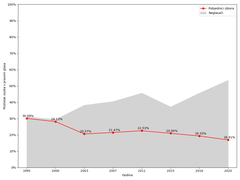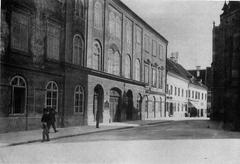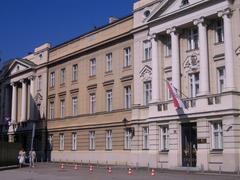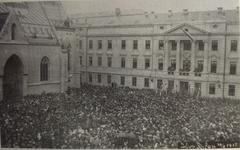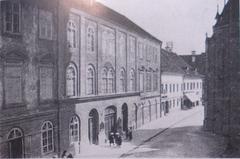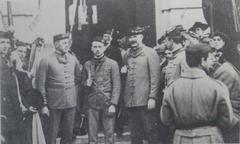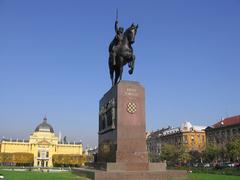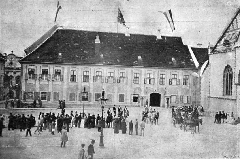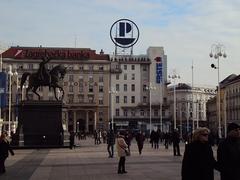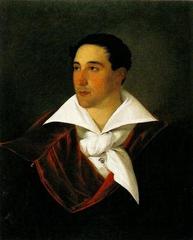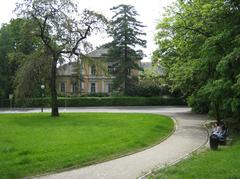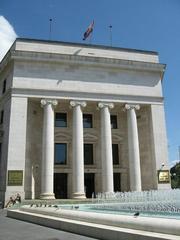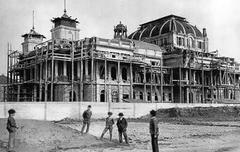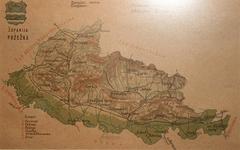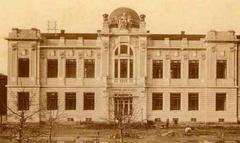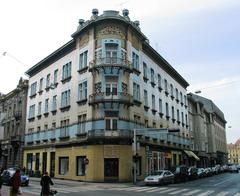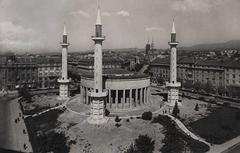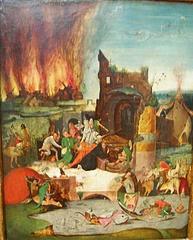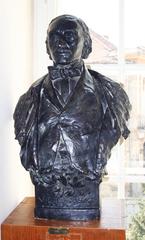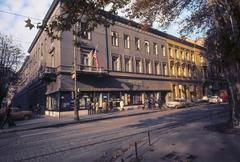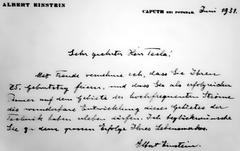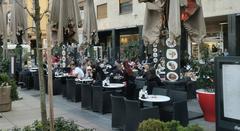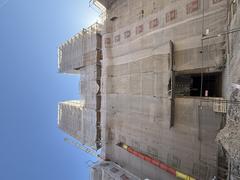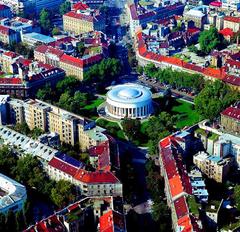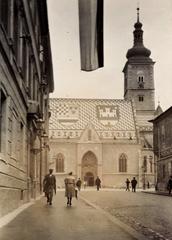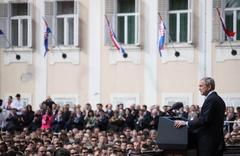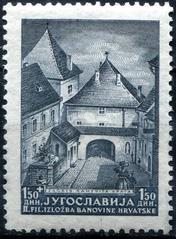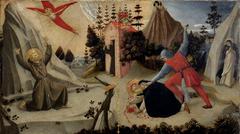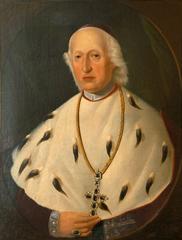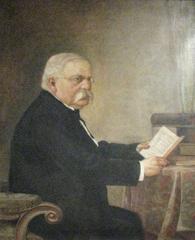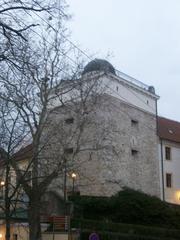
Parliament Palace (Sabor Palace) Zagreb, Croatia: Visiting Hours, Tickets, and Comprehensive Travel Guide
Date: 14/06/2025
Introduction: The Heart of Croatian Democracy
Located in the storied Upper Town (Gornji Grad) on St. Mark’s Square, the Parliament Palace (Sabor Palace) is a pillar of Croatian national identity and a fascinating destination for visitors. Its history spans centuries, from medieval gatherings to modern legislative sessions, reflected in its evolving architectural styles and political significance. This guide provides a detailed overview of the Parliament Palace’s history, visiting hours, ticketing, guided tours, accessibility, and top tips for an enriching visit to one of Zagreb’s most important landmarks (Sabor.hr, Visit Croatia, The Crazy Tourist).
Table of Contents
- Historical Overview
- Visiting the Parliament Palace
- Nearby Attractions and Photographic Spots
- Frequently Asked Questions (FAQ)
- Practical Tips for Your Visit
- References
Historical Overview
Origins and Early Development
The Croatian Parliament (Sabor) has convened since the 13th century, initially meeting in private homes and ecclesiastical residences. A permanent base was established in 1731 when a house was acquired on St. Mark’s Square. The first official parliamentary session there took place in 1737, marking the beginning of the palace’s transformation into a center of national decision-making (Sabor.hr).
Architectural Evolution
The palace’s architecture mirrors Croatia’s layered history. Originally an 18th-century structure, it underwent several expansions and renovations, culminating in a major neoclassical redesign completed by architects Lav Kalda and Karlo Susan in 1911. The building harmoniously combines elements of classicism, neo-Renaissance, and Art Nouveau, distinguishing itself among Zagreb’s diverse architectural landscape (Sabor.hr).
Political Significance
The Parliament Palace has been at the epicenter of Croatia’s pivotal political events, including the 1918 proclamation of independence from Austria-Hungary and the 1991 declaration from Yugoslavia. Today, it remains the active seat of the Croatian Parliament, symbolizing the nation’s enduring democratic spirit (Britannica).
Visiting the Parliament Palace
Visiting Hours & Tickets
- Hours: Guided tours are typically offered Monday to Friday, from 9:00 AM to 4:00 PM. The palace is closed on weekends and during public holidays. Hours may vary depending on parliamentary sessions, so always confirm ahead (Sabor Official Website).
- Tickets: Guided tours are generally free, though advance booking is mandatory due to security regulations. For tour requests, contact the Parliament’s visitor office at [email protected].
- Accessibility: The palace is partially accessible; some historic areas have steps or uneven flooring. Notify the office in advance for accessible tours (Croatian Parliament Contact).
Guided Tours & Virtual Experiences
Guided tours (offered in Croatian, English, and other languages upon request) include:
- Introduction to St. Mark’s Square and its political significance.
- Visits to the main parliamentary chamber and select historical rooms.
- Displays of artifacts like the 1643 “Chest of Privileges.”
- Architectural highlights and temporary exhibitions on Croatian political history.
Virtual tours and interactive maps are available on the Parliament’s official website for remote visitors.
Location & Getting There
- Address: Trg Svetog Marka 6, 10000 Zagreb, Croatia
- Directions: St. Mark’s Square is best reached on foot from the city center or via the funicular from Lower Town. The nearest tram stops are Ban Jelačić Square and Kaptol, followed by a short uphill walk (The Crazy Tourist).
- Transport: The area is pedestrian-friendly. The funicular offers step-free access.
Nearby Attractions and Photographic Spots
- St. Mark’s Church: Famed for its colorful tiled roof depicting Croatian and Zagreb coats of arms (InfoZagreb - St. Mark’s Square).
- Banski dvori: The Governor’s Palace, also on St. Mark’s Square.
- Museum of Broken Relationships: An acclaimed museum nearby.
- Stone Gate (Kamenita vrata): The last remaining medieval gate of Gradec.
- Lotrščak Tower: Offers panoramic city views and the daily noon cannon firing.
- Tkalčićeva Street: Bustling cafes and shops nearby.
The exterior of the Parliament Palace and St. Mark’s Square is ideal for photography. Interior photography is generally restricted.
Frequently Asked Questions (FAQ)
Q: Can I visit the Parliament Palace without a guided tour?
A: No. Entry is only permitted via pre-arranged guided tours.
Q: Are tours free?
A: Yes, official guided tours are free, though donations may be suggested for groups.
Q: Is the building accessible for those with mobility challenges?
A: It is partially accessible. Notify the visitor office ahead for special assistance.
Q: What documents do I need to bring?
A: A valid photo ID (passport or national ID) is required for entry.
Q: Can I take photos inside?
A: Photography inside is generally prohibited, especially in chambers. Exterior photography is permitted.
Q: When is the best time to visit?
A: Spring (April–June) and autumn (September–October) offer pleasant weather and fewer crowds (Time Out Croatia).
Practical Tips for Your Visit
- Language: Croatian is official, but English-speaking guides are available.
- Dress Code: Smart casual attire is recommended. Avoid shorts and flip-flops.
- Security: Expect airport-style screening and restrictions on large bags.
- Weather: The Upper Town can be windy. Bring a jacket in cooler months.
- Local Etiquette: Maintain a respectful demeanor, especially during official events.
- Currency: Croatia uses the euro (EUR). Carry some cash for small purchases.
- Nearby Amenities: Public restrooms and bilingual signage are available in Upper Town.
For self-guided exploration, follow the scenic route through the Stone Gate or take the funicular from Lower Town (Nomad Epicureans).
References
- Sabor.hr
- Britannica
- Visit Croatia
- The Crazy Tourist
- InfoZagreb - St. Mark’s Square
- Time Out Croatia
- Nomad Epicureans
- Travel Melodies
- We Will Nomad
- Rough Guides
Conclusion
The Parliament Palace (Sabor Palace) is a cornerstone of Croatian democracy and a must-see for anyone exploring Zagreb’s Upper Town. Plan ahead by checking visiting hours, arranging guided tours, and exploring the nearby historical and cultural attractions. For up-to-date information, visit the Parliament’s official website. To enrich your trip, download the Audiala app for audio tours and exclusive local insights, and follow trusted travel resources for ongoing updates.
Image Suggestions:
- Parliament Palace and St. Mark’s Church on St. Mark’s Square (alt: “Parliament Palace Zagreb and St. Mark’s Church on St. Mark’s Square”)
- Interior of the Croatian Parliament session hall (alt: “Interior of Croatian Parliament Palace session hall”)
- Map of St. Mark’s Square highlighting the Parliament Palace (alt: “Map of St. Mark’s Square with Parliament Palace marked”)

